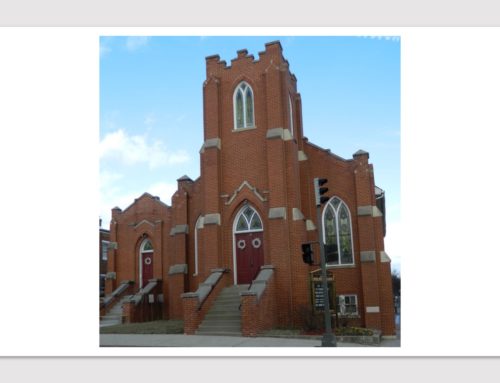By Lisa Mroszczyk Murphy, MAHDC Board of Directors and Historic Preservation Planner, City of Frederick
In 2012 Park Hall, a c. 1840 brick manor house with Greek Revival and Gothic Revival influences along the historic National Road was demolished. The property was not locally designated but had been identified in the City’s Comprehensive Plan as being eligible. Many in the community were shocked by the unexpected demolition of Park Hall; however, even if proper permits had been obtained there would have been no opportunity during that process for the community to become informed about the pending loss of a historic building it greatly valued. Shortly thereafter, Alderman Kelly Russell and Alderman Michael O’Connor led a proposal to implement a city-wide demolition review ordinance.
The demolition review ordinance was adopted in 2013 with the goal of ensuring that potentially significant undesignated historic resources are not demolished without notice to the community and the opportunity to be protected if appropriate. The structure must be 50 years old or older or of unknown age to be subject to the review which is triggered by the submission of a sketch plan, minor site plan, or demolition/building permit that depicts demolition work. Owners may also apply for review at their own request. If the Historic Preservation Commission recommends a structure for designation as a result of demolition review, the permit or plan is on hold until the designation process is completed and the Mayor and Board of Aldermen have made their final decision.
Since the ordinance was adopted, 21 requests for demolition review have been submitted. Of those, 15 were for structures 50 years old or older. The Historic Preservation Commission only recommended three of the 15 for designation. The first was the 1947 Art Deco Coca-Cola Bottling Plant. Although this property was previously identified as eligible in the Comprehensive Plan, the Alderman voted not to designate it. Therefore, it can be demolished any time in the following five years without further review. The second property was the Conley Farm which includes a stone house, smokehouse, and stable dating from the late nineteenth century; and a dairy barn, milk houses, and silo from c. 1925. This property was also identified in the Comprehensive Plan and ultimately the Alderman voted to designate it as the second individual landmark in the City. The structures will now be incorporated into a new residential development. The third designation application is currently pending for the Shaver/Johnson Farm which includes a c. 1886 farmhouse and structures from the twentieth century dairy farming operations.
Ideally, applications to designate historic landmarks and districts should not only be made in response to the imminent threat of demolition but staffing and funding for survey, research, and outreach do not always support a more proactive approach. While design guidelines are improved: survey, research, and documentation are undertaken; financial incentives for designation are implemented; and outreach and education provided to property owners, demolition review is a tool that provides some interim protection and opportunities for meaningful public input.







